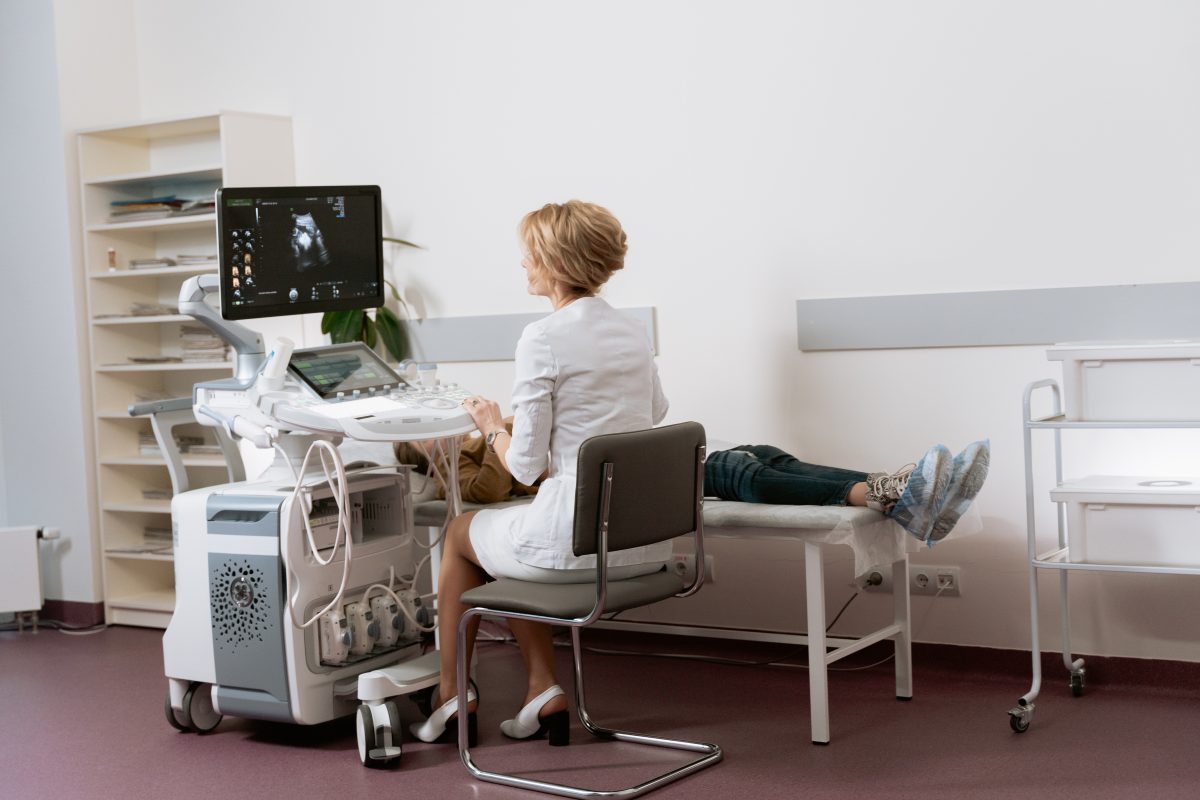Medicine is an ever-evolving field; changes in medical practice can be made due to advances in technology, new knowledge, or even, as we have observed with the COVID-19 virus, in response to evolving pathogens or medical conditions.
Diagnostic imaging is a field that has advanced considerably since the invention of the x-ray by Wilhelm Rontgen in 1895. Since that time, diagnostic imaging techniques, including ultrasound, x-ray, BMD, MRI, and CT scans, to name a few, have become common tools in the diagnosis and treatment of medical conditions.
In recent years, the efficacy and versatility of musculoskeletal ultrasound has become increasingly apparent.
An article titled Problem Solved: Integral Applications of Musculoskeletal Ultrasound, dated June 30, 2020, highlights ten valuable and unique uses for musculoskeletal ultrasound in medicine today.
The authors of the article list the following ultrasound applications: “(1) accessibility and portability, (2) targeted imaging, (3) dynamic imaging, (4) contralateral comparison, (5) Doppler imaging, (6) increased spatial resolution, (7) solid versus cystic comparison, (8) post-traumatic imaging, (9) postsurgical imaging, and (10) treatment delivery and optimization.”
What makes ultrasound so versatile and useful?
So, you might ask yourself, what makes ultrasound so versatile and useful, when many consider other imaging techniques, such as MRI and CT scans, to be the gold standard?
Increasingly smaller machines
1.- For one, ultrasound machines have become increasingly smaller, more readily available, and more sophisticated in their image quality.
This means that, unlike with other imaging techniques, the wait times for an ultrasound appointment are considerably shorter and can often be performed in your own physician’s clinic.
View dynamic images
2.- In addition to their accessibility, ultrasound also has the unique ability to view dynamic images.
Why is this important?
For two reasons: First: during a procedure like an MRI, patients must remain very still in order to capture an accurate image. If, during the procedure, the patient moves, the image can be blurred, possibly to the point of being unusable. An ultrasound does not have this issue, as the ultrasound images can be viewed by the technician in real time as it is being performed. Second: in addition to movement not hindering a technician’s ability to view musculoskeletal tissues, it can, at times, also serve as an advantage with viewing the desired tissues.
For example, certain conditions, such as a shoulder impingement syndrome, can only be seen with certain movements, called provocative maneuvers.
Therefore, the technician can instruct their patient to adjust their position or perform certain movements during a procedure in order to better view a specific area or diagnose a condition.
Safety
3.- In addition to the above-mentioned advantages of ultrasound is the very important issue of safety. Physicians use extreme caution when ordering certain imaging tests due to risks, such as potential damage due to exposure to ionizing radiation from tests like x-rays and CT scans or the prohibitive cost to our heath care system of unnecessary use of costly equipment like MRI machines.
Reduced risks
4.- Ultrasound, on the other hand, does not appear to carry the same risks of DNA damage due to exposure and it is inexpensive, relatively speaking.
Because of this, an ultrasound technician may feel free to examine an opposite limb for comparison if, for example, an unusual finding is seen on a patient’s arm (called a contralateral comparison); that way, they can determine if the unusual finding is medically significant or is just a physical anomaly unique to that patient.
Complete picture
5.- A technician can also adjust what area of the body is being viewed, based on their findings, to get a more complete picture of a relevant finding. This can be done without risk of exposing the patient to unnecessary radiation, without additional inconvenience, as it can be performed within the same appointment rather than having to book and wait for an additional appointment, and can be done with minimal, if any, additional cost.
Suitable for persons with special conditions
6.- Additionally, it can be used with patients that may not be able to safely undergo another procedure, such as an MRI, due to certain medical conditions, such as pacemakers, cochlear implants, or other surgical implants or hardware.
Can be used in women who are pregnant
7.- Ultrasound can also be used for women who are pregnant (and therefore, are advised against undergoing x-rays, CT scans, or even MRIs), for patients who are sensitive to or allergic to the contrast dyes used in other procedures, or are claustrophobic and do not want to undergo an MRI for that reason.
Better suited for certain conditions
8.- Not only are ultrasound procedures more accessible and lower in possible risks than certain other diagnostic imaging techniques, but they are actually better suited to diagnosing certain conditions.
Doppler imaging, for example, is able to observe the flow of blood through vessels to identify conditions like a blocked or narrowed blood vessel.
Able to identify very small abnormalities
9.- Ultrasound, which has considerably improved in resolution in recent times, is also able to identify very small abnormalities which may be missed by other imaging techniques.
Safety and Accuracy increased
10.- Additionally, because ultrasound images work in real time, they can be used to increase the safety and accuracy of other medical procedures, such as performing certain types of injections.
A clear picture of some of the advantages of utilizing ultrasound
While this is, by no means, a complete picture of all of the advantages of ultrasound as an imaging technique, it hopefully provides a clear picture of some of the advantages of utilizing ultrasound in conjunction with, or in place of, certain other diagnostic imaging techniques.
While ultrasound continues to evolve in its uses and improve in its efficacy, it is already an exciting tool in the field of medicine with innumerable uses and advantages to patients today.
Motamedi D, Bauer AH, Patel R, Morgan TA. Problem Solved: Integral Applications of Musculoskeletal Ultrasound. J Ultrasound Med. 2021 Aug;40(8):1693-1704. doi: 10.1002/jum.15551. Epub 2020 Nov 6. PMID: 33155690.
PREPARING FOR YOUR ULTRASOUND

